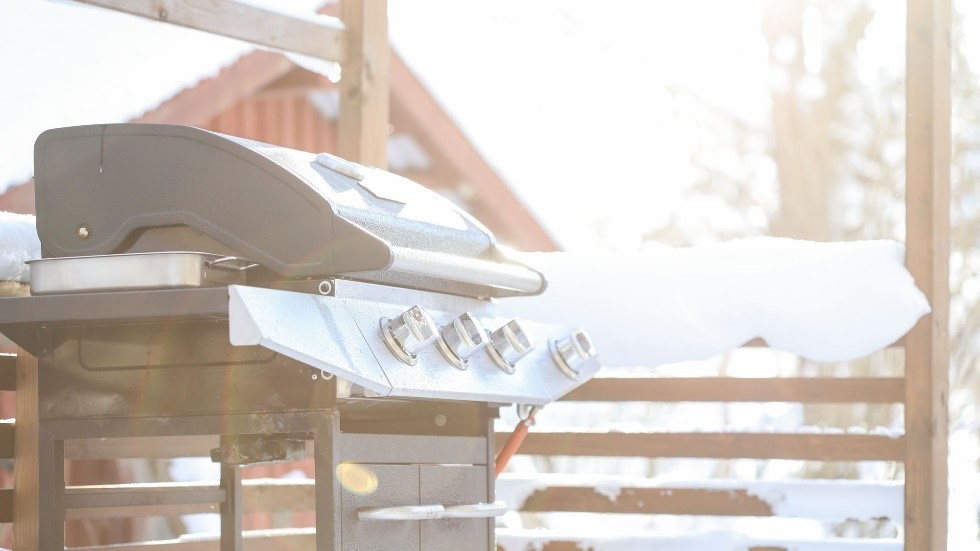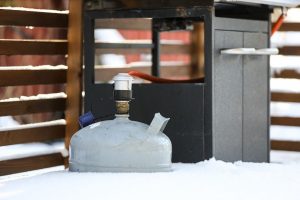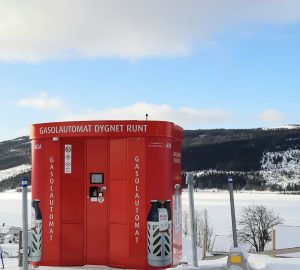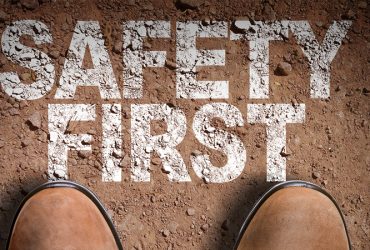
10 tips for winter grilling
1. Make sure that your ingredients and marinades do not freeze
Grilling icy or semi-frozen ingredients does not lead to the best result. Cooler bags, commonly used in the summer, are also a great help in the winter, as they keep out the cold air. Sauces and marinades harden quickly in the cold and can be difficult to get out of the bottle or spread onto food. Vegetables also freeze easily in the cold and should therefore be prepared indoors.
2. Reserve plenty of time
Heating a grill and preparing food takes longer in the winter. The thin sheet metal on grills often conducts heat away and windy weather and snow speed up the cooling process. If you haven’t used your grill for a while and it hasn’t been protected, it may be frozen or require a good clean. The gas cylinder valve may also be frozen if it hasn’t been protected.
3. Don’t try to cook too many dishes at once
The number of dishes should be kept reasonable when grilling in the winter so that the food has time to cook properly and can be served warm.
4. In winter, use a steel cylinder instead of a composite one
Gas grills require gaseous liquid propane gase (LPG). In cold weather, LPG vaporises more efficiently in a steel cylinder than in a composite cylinder, while in the summer, composite cylinders are a good option due to their light weight and transparency.
 5. Store gas cylinders in an upright position
5. Store gas cylinders in an upright position
Store gas cylinders upright and make sure they don’t fall over during grilling due to snow or uneven surfaces.
6. Make sure your gas cylinders function in the cold
The pressure inside the gas cylinder depends on the temperature of the gas and the cylinder. For example, at -20°C, the pressure of an LPG cylinder is 1.4 bar and at +20°C, 7.3 bar. When you release gas from the cylinder, more gaseous gas will vaporise from the liquid gas. This process requires heat and as a result, the cylinder and the liquid gas inside it cool down. With cold winter temperatures, the cylinder might get so cold that no more gas can be released. As the gas pressure drops, you may be tempted to heat the surface of the cylinder with a burner flame. This should never be done, however, as the cylinder’s material cannot withstand intense heat and the pressure inside the cylinder may rise uncontrollably. For the same reason you should never store the cylinder under the grill. In heavy frost, snow acts as a good insulator, so if you place the cylinder in the snow it will stay warmer than if you just leave it in the open air. Still, it is more efficient to switch between two cylinders. This way you can keep one cylinder warm and replace the cold one when its capacity begins to decline.
7. Make sure you have enough gas

Propane automat in Åre, Sweden
Grilling requires more gas in the winter than in the summer and the temperature also affects the gas cylinder’s capacity. The potency requirement for normal-sized grills set to full power is usually about 10-20kWh. For example, the capacity of a half full 1-kilo steel cylinder at +20 degrees is about 22kWh, but at 10 degrees below zero it is just over 11kWh. Grills rarely need to be used at full capacity, but it is a good idea to reserve enough gas. Fans of grilling who find themselves unprepared for the winter can contact one of the close to 2,000 available AGA dealers any time from early morning till late evening. Also remember that AGA offers 24/7 propane automats.
8. Do not touch hot objects with cold fingers
Cold fingers are very prone to burns and the cold can also numb your senses. Be careful and avoid touching hot things.
9. Check the state of the gas hose
Gas hoses wear over time and sunlight, for example, makes them more brittle. Test your gas hose by bending it and check for any cracks. The best place to do the bending test is inside in warm temperatures, as thus the hose will be more flexible.
10. Clean the grill immediately after use 😊
The grill cools down quickly in the cold and grease and other dirt are thus harder to wash off. Clean the grill while it is still warm and protect it from snow and ice, and make it ready for future use. Remember to also protect the gas cylinder.
Text: Anniina Sjöholm, Milla Huovila



